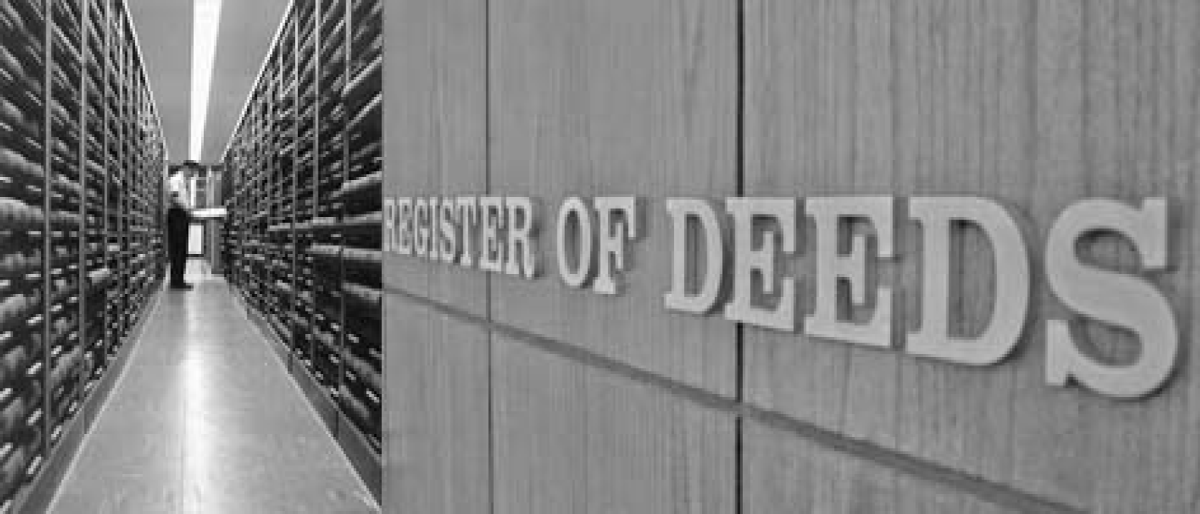Hawaii Recorders Information

You are NOT on the Hawaii official website, you are on Deeds.com, a private website that is not affiliated with any government agency.
The Bureau of Conveyances is responsible for recording and maintaining property records in Hawaii County.
There are two systems of recording in Hawaii: Regular System and Land Court System. The Regular System gives notice that something is on record. Land Court functions as a registration system for land ownership. Certificates of title are issued to owners of land registered in Land Court, and documents are identified by a seven digit number. Unlike Regular System property, ownership in Land Court is guaranteed by the State of Hawaii.
The registrar's responsibility with regards to recording real estate deeds and other such real estate related documents is outlined by statute listed below.
13-16-4 Recording method.
(a) The registrar shall make or cause to be made an entire literal copy of all instruments, with their original signatures, recorded in the bureau, and the registrar shall certify its correspondence with the original, after which the registrar shall certify upon the exterior, or endorse upon the recorded instrument with the original signature, the date and time of its registry and a document number.
(b) All names of all natural persons signing in their individual capacity in the instrument shall be typewritten, stamped, or printed manually, or by some other mechanical or electrical printing method beneath all original signatures. No discrepancy in the name shall exist between the name, as it appears either 1) in the body of the instrument, 2) beneath the original signature, or 3) in the notary's certificate of acknowledgment. All aliases must also be included within the three aforementioned areas. When using generic form acknowledgment pursuant to section 502-41(6),HRS, the name of the person signing in their individual capacity must be typewritten, stamped, or printed manually, or by some other mechanical or electrical printing method beneath the original signature. The provisions of this paragraph shall not apply to any deed or other instrument executed prior to January 1,
1990.
(c) The registrar may refuse to record any instrument of a size larger than eight and one-half inches by eleven inches, or which contains a schedule, inventory, or exhibit in excess of such size. If an instrument consists of more than one page, each page shall be single-sided sheets of written text numbered consecutively, beginning with number one, or the total number of pages contained in the document must be referenced on the first page thereof, without any papers or materials secured or attached in any manner that may conceal any written text, and it shall be stapled once in the upper left corner or fastened and shall not have a cover or backer attached. The registrar shall be permitted to remove any rivets affixed to any instrument. In addition, the first page shall identify and include, if possible, all names of the grantors and all names and addresses of the grantees, the type of document, and the tax map key number. The provisions of this
paragraph shall not apply to any instrument executed prior to January 1, 1990.
(d) The registrar may refuse to record all instruments, papers, or notices that will not reproduce legibly under photographic or electrostatic methods.
(e) On all instruments to be recorded the top three and one half inches of the first page shall be reserved for recording information for the registrar or assistant registrar on the left half, and for the registrar of conveyances on the right half. The following one-inch of space shall be reserved for information showing to whom the document should be returned. Persons requesting the document to be returned by mail must show the complete mailing address beginning one and one-half inches from the left margin, and not exceeding three and one-half inches per line. A stamped self addressed envelope must also accompany the document. Nonconforming documents may have a conforming flysheet attached.
(f) The registrar may accept form instruments for recording and permit other subsequent documents to be recorded later which incorporate provisions of the form instrument and reference the document number.